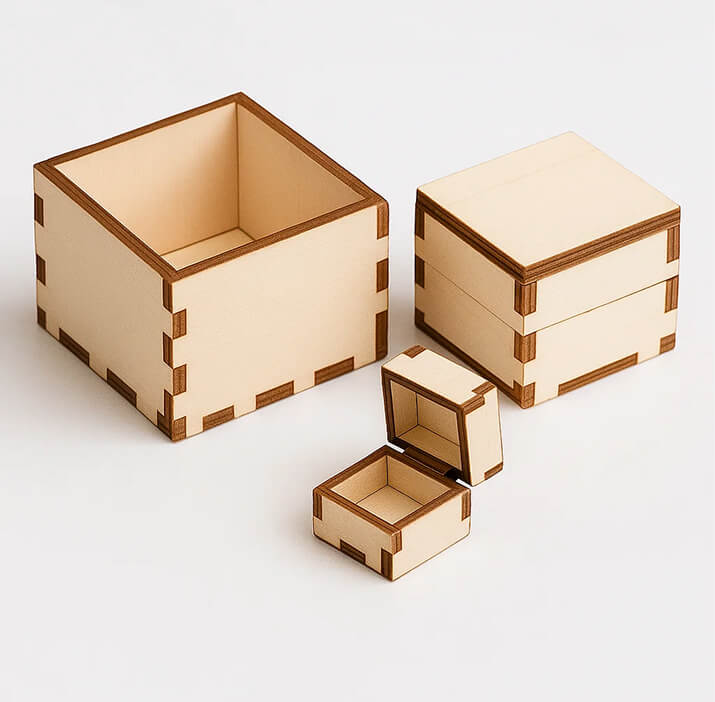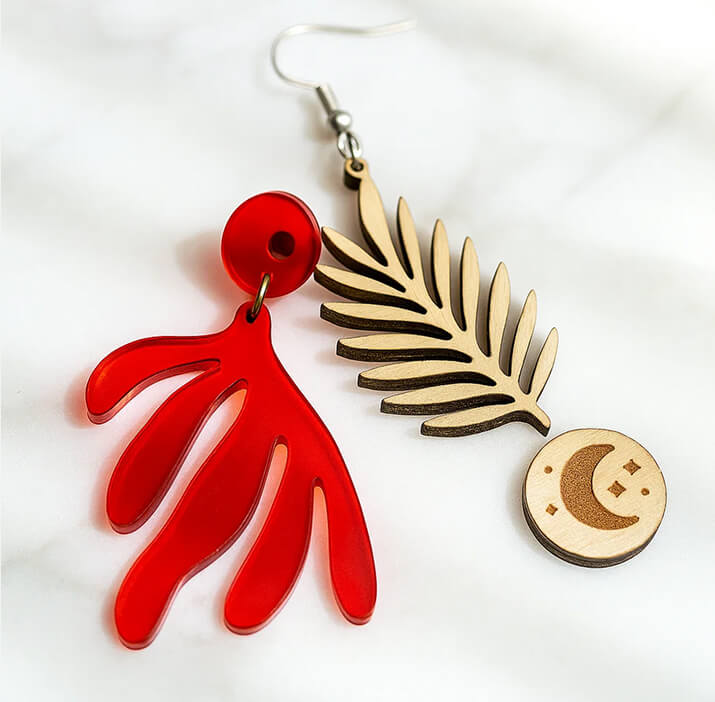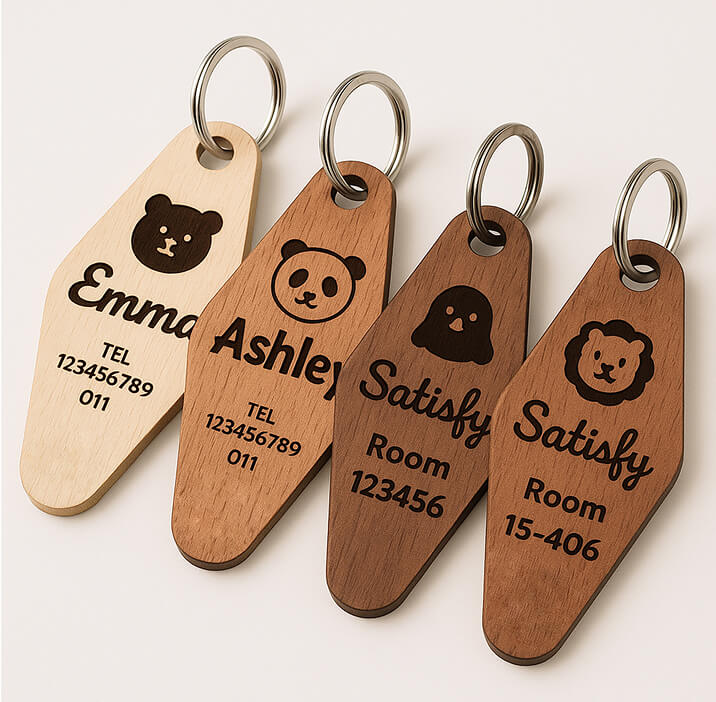Laser Cut Wooden Display Stand for 3 inch Christmas Ornament
Information
From the moment I stepped into the world of laser crafting, I knew one thing for certain: I wasn’t just here to make art—I was here to show it. Events, markets, and showcases were always part of the vision. But let’s be honest—what kind of maker would I be if I relied on generic, factory-made displays to present my work?
Every stand, every showcase you’ve seen in my posts? Built by me. Designed with intention. Tailored to elevate each piece I create.
Whenever I introduce a new item—whether it’s a playful sticker, a mythic engraving, or a festive ornament—I immediately start imagining how it should be displayed. What shape, what angle, what vibe will make it sing? And when I finally land on the right design, it’s like flipping a switch. The piece shines brighter. The whole setup feels alive. And I feel that surge of empowerment—that creative adrenaline—that drives me to connect, share, and sell.
These displays aren’t just holders. They’re part of my story. They’re proof that every detail matters. And they remind me, every time I set up, why I started this journey in the first place.
Recently, I stumbled upon a fresh batch of ornament designs and I knew they deserved more than just a shelf—they needed a stage. Something that would highlight their charm, celebrate their uniqueness, and make people stop and look.
So I got to work. I sketched, tweaked, and refined until the display felt just right. And now, I’m thrilled to share those plans with you—my fellow laser crafters.
This custom stand is built specifically for 3-inch round flat ornaments, and it’s got one mission: to showcase with purpose and sell with style.
Add it to your display arsenal. Let your ornaments shine. And let your craft speak for itself.
Included with this project are:
XCS Plans
SVG Plans
Complete Instructions
Instruction
Step1: Before you begin
This is a simple project and something that I am quite proud of. It does not take long to assemble however, it can take a bit of time to cut out the pieces.
I used 6mm (¼") birch plywood. You could use a different wood and/or machine, but just remember that the settings will need to be adjusted to your tested specifications.
As I assembled this, I noted that the pieces were just a bit loose putting the tabs into the slots. It was not enough to cause worry and actually worked better to allow for flexing of the “Cup” legs to allow for assembly.
I recommend sanding the back piece, adding the “Cups” and then sanding the face of the cups to get rid fo burn marks. Since the “Cup” legs are not seen, they really do not require sanding.
There is a total of 51 pieces in the normal display and 63 in the “Capped” display. (More on this in step 6.)
Step2: Cut out your Pieces
Use the above listed settings to cut out your pieces. Keep in mind that if this is plywood, you may have some spots that do not cut all the way through due to glue build up. Be prepared to run a second pass if you notice this. Make sure to look at your cut wood carefully before removing it so you can note if this is the case and make that 2nd pass.
Step3: Assembly the "Cups"
Once you have all your pieces cut out, divide them up so all the “Cup” legs and "Cup" fronts are separated out.
I like to use Starbond Thick adhesive since it gives a little work time before setting up and bonding.
Put a liberal amount on all four sides of one end of a cup leg and insert it into one of the tab holes of the “Cup” front. Each “Cup” Front has 3 tab holes and you will want to do this to all of them.
After you complete the 3 legs in a “Cup”, turn the cup to where it is resting on its legs so that it can cure completely without a chance of the “Cup” front adhering to your crafting surface while you work on the other “Cup” fronts. Alternatively, you could use extra “Cup” legs to rest it on as shown in the last picture.
Step4: Attach the "Cups" to the back
For this step, make sure that your back piece is raised off your crafting surface to keep it from sticking/bonding to it. Use scrap blocks and try not to place these risers under any holes of your back piece.
Put a bit of glue on the end of each leg of the “Cup” on all four sides. Slide it into the appropriate slots on your back board. You will most likely have to “shift” a few of the legs to fit in as they will dry crooked from when attached to the “Cup” fronts in the last step. This is why the tab openings being slightly larger are a good thing. It allows for that wiggle room to get the legs to fit in.
Once you have all three legs in, run a bead of glue on both the inside and outside joint where the legs meet the back board. Do this for all 12 of the “Cups”
Step5: Attach the Legs
To attach the legs is very simple. Flip your back board over and take the two “L” shaped legs. Thes have two tabs. Find the four tab slots on your back board. Put a strip of glue along each tab and then down the edge of the legs between the tabs. Slide the tabs into the tab holes and then run a bead of glue where the leg meets the back board.
Once dry, your display is complete and you can load it with 3" round flat ornaments.
Step6: Optional Front Face Plates
I want to show off my pieces so I opted to have most of my displays without this. There are those, however, who may want to have the front of each “Cup” capped to cover the tabs that show through.
For those, I present this optional addon to help cap and cover those tabs. Just cut them out and glue them to the front of each “Cup”
EDIT: Added in to the plans per request are face plates that match the curve of the “Cups” to cover the tabs but maintain that arced look.
Step7: Final Notes
As I stated previously, I feel that my displays need to be made by me to make my product really shine. Every item I carry and sell is set out on displays crafted by me. Some of them were designs I got from places like Atomm but most were designed by me and that makes me feel even more connected and positive about what I showcase. I hope that this plan helps you display your own product prominently.
If you like this project, support me by checking out my other projects at the following link. I have a few premium projects but I carry mostly free to download designs. Leave a comment on what you thought of this project and how I may be able to improve it. I would genuinely love to know what you think of this.





